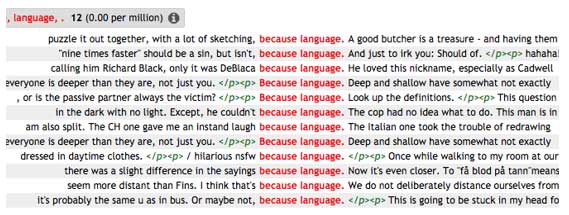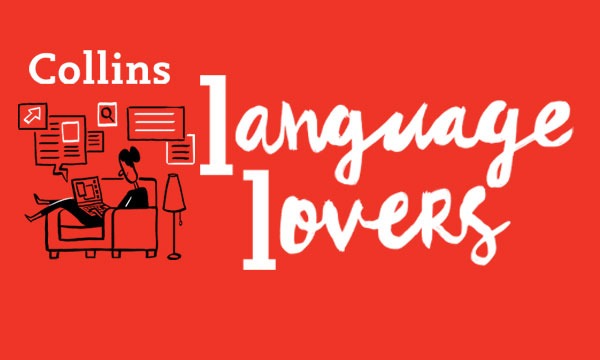In the second of our blog posts about the new edition of COBUILD English Usage, Penny Hands details some of the findings that came out of the team’s research into the ways in which new words and uses are created, and usage changes in vocabulary and grammar.
The second stage of the COBUILD English Usage update involved a survey of the current state of various aspects of the English language. It was carried out specially for this edition using the constantly updated Collins Corpus, as well as social media research and crowdsourcing.
It’s all very well having billions of words of corpus, but how do you find new words in it? It’s for this reason that a linguist’s job is a 24-hour one, constantly on the lookout for new words and uses. Corpora allow us to track these changes and to look for different ways that they are used, and to establish who uses them and in what context.
One really useful source of data is the Language Observatory Group (LOG) facebook page, set up by Mike McCarthy, where members add their observations about changes in the language.
The aim is not to gripe about ‘annoying’ things we hear people say, but some members care about that happening more than others. Mike has a certain refreshing tolerance for people expressing their preference for, or dislike of, certain neologisms, taking the view that a lot of fashions in clothes, music, etc, seemed odd or silly when they came out (and then do again when we look back on them).
New words are created all the time, often coming into the language via younger people. Occasionally we see a completely new word appear apparently from nowhere; more often, though, new words come about by people recycling existing ones so that they are used in a slightly different way.
The resulting findings hopefully provide a handy reference guide to new words and uses, but they also represent a fascinating snapshot of today’s society with all its attitudes and preoccupations.
Comparing the Bank of English section of the Collins Corpus with the ‘New Monitor’ corpus (which contains recent material from news and social media websites), we explored the ways in which language has evolved, looking at content from social media sites and news articles produced over the last 10 years.
Firstly, based on data from Collins’ new words database, we looked at some of the most popular ways of creating new language.
Common ways of doing this include adding a prefix or a suffix to an existing word, combining words, or using words in new ways, perhaps by giving them a new function or part of speech.
So the first thing we did was to follow up some hunches we had about new-word creation. As predicted, a lot of the new words we were seeing coming through in our dictionary department were ones created from existing words, combined with prefixes and suffixes.
Here are some of the most prominent innovations that came up in our survey of the current state of the language.
Prefixes
Common examples were:
crowd-
crowdsourcing
crowdlending
crowdwritten
crowdworking
crowdfinancing
crowdsharing
up- and down-
upthread, upvote, uptick
downthread, downvote
Suffixes
Common examples were:
-less cashless, contactless, driverless, paperless
-free traffic-free, GMO-free, carbon-free, meat-free, lactose-free
Verbing
This one was flagged up among others on the LOG facebook page by Gavin Dudeney, who spotted the use of ‘sciencing’ on Radio 4.
The new probe is due to touch down on Mars soon and will be ‘sciencing’ as soon as it does.
This observation led us to investigate the current craze for verbing.
What we found, on investigating the social media sections of the Collins corpus, was a multitude of verbs based on brands.
Brand names have always been a rich source of verbing – hoovering, xeroxing, googling – but they seem to be proliferating in our current climate. I wonder if that’s because of the way that we all feel part of the action – we have agency over what gets bought and sold on these sites.
Why are you asking this here when you can just google the answer?
Jen snapchatted the whole thing.
Now we usually Netflix it or chill at home with some good food.
We also found plentiful examples of airbnbing, eBaying, Instagramming and Ubering.
Adjectives as nouns
The next tendency we investigated was the sudden increase we had noticed in the use of adjectives as nouns.
Spread the happy. (Nutella®)
Committed to great since ’78. (Ben & Jerry’s®)
Find your fabulous.
And, by extension, a HarperCollins book …

‘Because’ as a preposition
Finally, we observed the repurposing of because as a preposition:
Why bother discussing this? Because language.
Not bothering with this. Because lazy.
Not going out tonight. Because working.
Here’s a snapshot of the concordance for ‘Because language’:

Note the line from the 2018 social media corpus containing the acronym ‘nsfw’, which stands for ‘not safe for work’, often used as a warning for an email subject line or social media post when sharing a link to potentially inappropriate content:
‘… hilarious nsfw because language.’
See also below a Twitter user’s use of ‘Because’ + adjective:

Note the use of a full stop to create a pause for emphasis.
Finally, if you’re interested in looking into this type of research further, take a look at Jack Grieve’s inaugural lecture, ‘The Future of Language Change’ at the University of Birmingham in December, 2018:
https://www.youtube.com/watch?v=JTz4zQaizMY
Professor Grieve shows how the study of language change is fast becoming a data science, and demonstrates what can be done with social media and high-level analysis tools.
He shows a series of graphs to demonstrate how we can now track usage from its initial use on social media and its exact location. We can see on what days certain words are typically used, where a brand-new coinage starts, and its pattern of diffusion over time. We can even home in on a particular city or neighbourhood, and see in which district a word emerges.
In the past, linguists used to say that you can never know where a word started because you’re not there to notice them. But now that isn’t true, at least for language used on social media. Language change research is making huge strides – and we’re the lucky ones who are here to see it.
If you enjoyed this article, our next article in the series explores how language shifts reflect changing ideas about gender and identity.
The first article in the series looked at how we make changes to our examples to ensure they reflect changes in our society.



